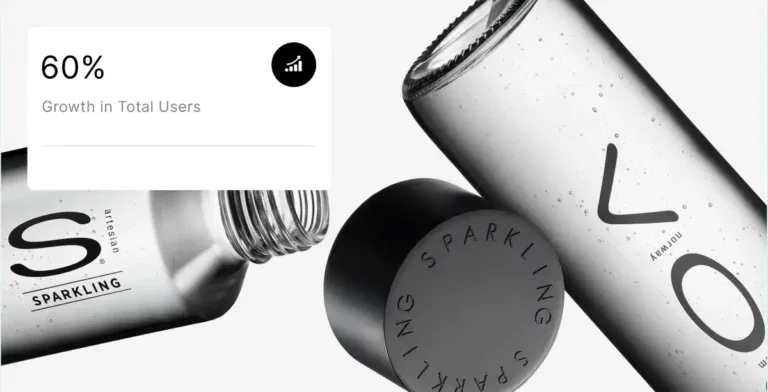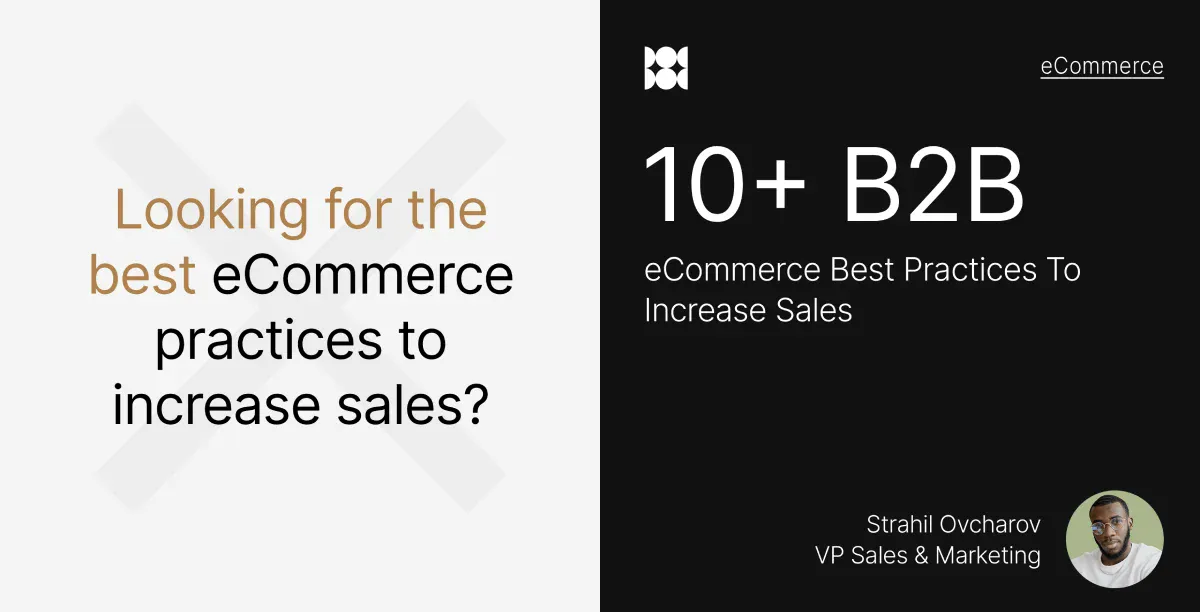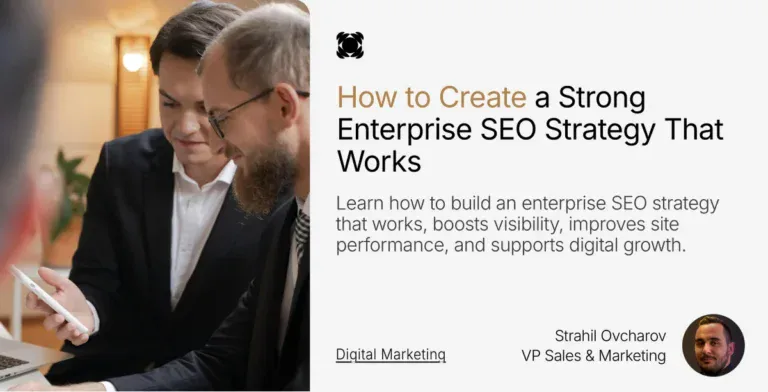As tech keeps evolving and changing how companies work internally, staying in the know of B2B eCommerce best practices is mandatory.
From helping your brand rank higher in Google’s search engine rankings to improving how users interact with your business website.
Having a well thought out strategy is imperative if you want to thrive in 2025.
But what are those B2B eCommerce best practices and how do you know if your brand is using them correctly?
In this article, we’ll go through our top B2B eCommerce strategies so you can start 2025 the right way.
Don’t know how to properly expand your marketing channels? We can help.
Top B2B eCommerce Best Practices
With so many B2B eCommerce strategies out there, it’s hard to know which ones are actually worth your time and effort. Without this knowledge, starting an eCommerce business that thrives and grows is difficult.
Don’t worry, we handpicked the next eCommerce best practices based on what’s worked for us and our clients.
1. Offer a B2C eCommerce experience for B2B customers
Tailor-made content and solutions work just as well in B2B as they do in B2C. It’s simple to lose sight of your audience.
Remember, you’re not selling to a robot or a heartless company. You’re selling to real people.
Many B2B companies still don’t personalize experiences like B2C companies do. This approach is impressive and can make a big difference.
Creating offers and content that are personalized to that very specific customer persona is the key to more sales.
In fact, more and more B2B buyers expect you to give them a personalized shopping experience that is also quick and convenient.
When it comes to B2B eCommerce best practices, knowing exactly what your customer wants and providing them with all the information they need before they get a chance to ask, is the way to go.
Like in B2C strategies, the last thing you want to do is waste a potential customer’s time.
2. Add and track KPIs
Key Performance Indicators (KPIs) are metrics businesses use to evaluate how successful their eCommerce strategies are. They are a must-have for any B2B eCommerce business since they help you track progress while helping identify where your business can improve.
Not having any KPIs for your business can be one of the biggest eCommerce mistakes you can make this year.
When adding KPIs for the first time, it’s essential to know what your goals and objectives are.
For the most part, eCommerce businesses include customer acquisition, cost per acquisition, conversion rate, and average order value.
While these aren’t set in stone, they are the go-to metrics for most B2B eCommerce companies.
Having your KPIs properly set up and keeping an eye on them every week ensures that your business stays on top of its goals.
3. Dynamic pricing will be the norm
The old days of static pricing are almost over. As more B2B eCommerce companies embrace modern pricing strategies that move from a universal approach to a malleable and data-driven one.
By using a dynamic pricing strategy, you can give your customers the flexibility and transparency they have grown accustomed to from B2C markets.
Nowadays, algorithms can change prices based on different factors. These can include supply and demand, competition, and time.
This means B2B eCommerce can now use different strategies to stay relevant and competitive without losing profits.
Adding discounts to unsold stock or providing package-based offers has never been easier.
4. Headless commerce for B2B
Headless commerce is now essential for B2B companies. It gives customers the freedom to customize their experiences.
Changing to a headless architecture offers a few things:
-
Quicker load times: The slower your website loads, the more likely it is for customers to leave.
-
Near-zero IT dependency: Reduce the amount of back-end updates needed to keep the website running.
-
Fast customization: Change your storefront however you want without any back-end annoyances.
77% of headless architecture companies can confirm that it helps make storefront changes a lot faster than before.
While the normal B2B websites can take weeks to update while also asking for resources.
A great website example of a company using a headless architecture in 2025 is Koala.
While it’s not a B2B company, the ability to make rapid changes to a website is the same for both B2B and B2C.
B2B eCommerce Best Practices for Marketing
1. SEO-first approach
It shouldn’t be a surprise that focusing on SEO and making sure your website is ranking properly is one of the B2B eCommerce best practices.
When starting an eCommerce business, SEO is by far one of the most important aspects you need to work on.
But how do you rank higher, and what should you take into consideration when improving your SEO strategies?
First, you have to remember that the same strategies that work for B2C SEO also work for B2B since they share the same ranking factors.
What we’re trying to say is that there’s no B2B algorithm or magical formula to rank higher on Google.
That being said, the way you implement SEO strategies on B2B eCommerce sites is different from B2C.
Why? Because you want to reach a very small group of people who make decisions in their company.
While B2C eCommerce might broaden its scope and use keywords that target the masses, in B2B we want to do the complete opposite.
Working on B2B eCommerce SEO is not something that will give you instant results. It will take months of strategic planning and consistent work before you start seeing tangible results.
Does that mean it’s not worth prioritizing SEO over other B2B eCommerce best practices?
Absolutely not. SEO is a critical part of your business.
If you don’t work on your site in order to rank higher, potential customers will find your competition before they find you.
It’s estimated that 90% of B2B buyers use search engines and social media as their primary method of finding new suppliers. This means there’s no workaround when it comes to digital marketing and ranking through Google.
Still don’t think SEO is important? Read our SEO statistics article so you can understand how vital SEO can be for your business.
2. Social Proofing
While social proofing used to be a B2C-owned strategy, it’s now a core part of B2B eCommerce best practices.
Why? Because making a big investment with a supplier that has no reviews, testimonials, product demos, or free trials is daunting.
Get in the buyer’s shoes for a moment.
Who would you rather trust, the B2B company with no reviews or proof of delivering a high-quality product or a company with hundreds of testimonials and a product demo?
In fact, according to TrustRadius, the biggest driving factor for B2B decision makers was customer reviews whenever they were researching a product.
3. Embrace User-Generated Content
Showcasing positive reviews past customers gave your company is an easy way to boost your social proof with little to no work from your end.
While this is the main way companies use user-generated content, there is still more you can do.
Going on social media and reposting videos where your product or service is being used is free organic exposure for your company.
While user-generated content is generally something used by B2C brands, B2B eCommerce companies can also benefit from it.
Have a look at the video above for more insights.
4. Content is King
No surprises here; the more content your B2B eCommerce company can provide, the better. Customers want to make an informed decision every time they buy a product or service.
Creating content on a consistent basis will not only showcase your expertise, but will also establish you as an industry leader.
This doesn’t mean your content has to be written only. Video content can be just as good when done correctly.
Making a series of videos of your product or service and what it can do to solve an issue in different industries can be ROI-positive if done correctly.
Not only would you be able to post those videos on your website, but you would also be able to publish them on different social media platforms.
Staying on top of content creation is, without a doubt, one of the go-to B2B eCommerce best practices.
B2B eCommerce Best Practices for Website Optimization
1. Mobile-Friendly Approach
While the mobile-first approach has been a thing for years now in the B2C industry, for some reason B2B eCommerce has failed to follow suit.
Searching on mobile is the norm for most people since it’s convenient and fast.
Mobile searches already take more than half of the total searches online in 2025. This means your website NEEDS to be optimized for any mobile device out there.
Nothing deters potential customers more than a badly optimized mobile website that renders poorly or takes too long to load.
Don’t know how to make your website mobile-friendly? Let us help you.
2. Improve your load speeds
Having a fast-loading website is mandatory if you want to increase your sales in 2025.
While this doesn’t only target B2B eCommerce websites, it’s still necessary.
If your B2B eCommerce website is taking longer than 3 seconds to load, then some work needs to be done.
A Google study shows how 40% of mobile site visitors will close a website and look for an alternative if the page takes more than 3 seconds to load.
Shaving down your B2B eCommerce website load time by compressing images, properly organizing code, and using caching techniques is a good starting point.
The reality is that potential customers don’t want to feel like they’re wasting their time by waiting for your website to load.
By improving your website’s load speeds you’ll make sure that never happens.
3. Add security measures
Visitors should be able to go to your website without running any risk of their information and data being stolen.
But how do you ensure that their information is secure?
The number one way to do it is by using HTTPS on your website.
Not only is it safer for your website and customers, it’ll also help you rank higher on an SEO standpoint.
Ensuring your customers feel safe when they’re about to pay for a product or service is also important.
The last thing you want is for a customer to back out because they’re unsure if their financial information is safe.
A good way to counteract this is by displaying the logos of the security software your website uses.
That way, customers feel a lot safer when buying from your company.
How to Know Your B2B eCommerce Strategy is Outdated?
If your company has been around for a while, it likely uses outdated B2B eCommerce strategies.
One outdated strategy might not hurt your revenue, but many will.
Here are some of the worst outdated B2B eCommerce strategies we have come across in the past few months.
Old-school email blasts
Remember when writing a single template for an email newsletter campaign was the norm?
Not anymore. Generic templates are easy to spot and will only help alienate potential customers.
Not only will newsletter subscribers ignore your email, but their own email app will eventually treat your company as a scam.
Long gone are the days of creating one-size-fits-all email and calling it a day.
If you want to thrive via email, you have to segment and implement personalized email marketing campaigns.
While it will take a lot more time to do this, the results will be considerably better than the old-school approach.
Customers want sales directed at them, not at everyone.
Using a single marketing channel for your revenue
Decades ago, B2B companies had one or at most two marketing channels to work with. They were expensive, but the ROI was high due to it being the only places they could reach their audience.
Fast forward to 2025, and the amount of marketing channels businesses have at their disposal is mind boggling.
You can now diversify your marketing channels and be everywhere as long as there are social media platforms available.
While spending all your ad budget on one social media platform like Facebook used to work in 2008, in 2025 it’s not going to cut it.
Improve Your eCommerce Website With Blacksmith
Ready to revamp your B2B eCommerce website? We’d love to help.
With dozens of eCommerce websites under our belt, we’re certain that we can take your website to the next level.
With our eCommerce web development services, we’ll optimize your website with all of the best eCommerce best practices we listed above.
All while providing you with information and updates on everything being done on your website.
Ready to get started? Contact us













